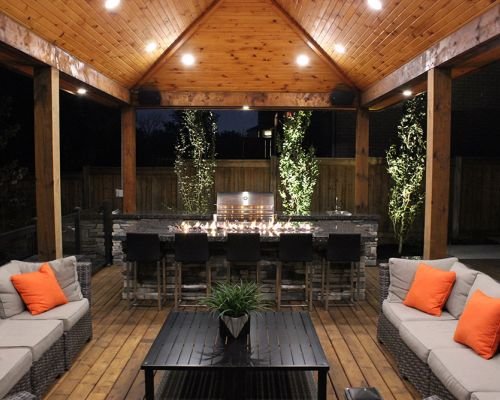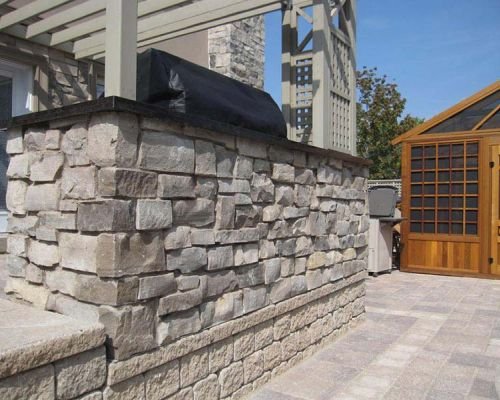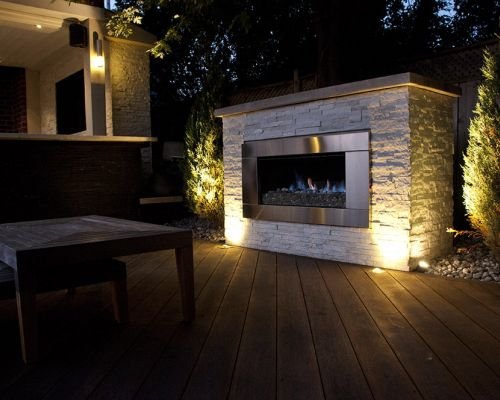
Transforming Toronto yards into stunning outdoor retreats is an art of balancing beauty, sustainability, and client satisfaction. But how can homeowners achieve this harmony—creating lush, inviting spaces that also serve the environment? This guide reveals how thoughtful design, native plants, eco-friendly materials, and water-smart features can turn ordinary yards into resilient, personalized sanctuaries. Emphasizing practical, long-term benefits, it explores trends like rain gardens, permeable paving, and native plantings that reduce maintenance and water usage while enhancing biodiversity. Cost considerations and real-world examples demonstrate that sustainable landscaping is not only aesthetically pleasing but financially wise. Are you ready to craft a backyard that elevates daily life, supports ecosystems, and withstands Toronto’s seasonal shifts? The secret lies in integrating innovative practices with purposeful design—resulting in outdoor spaces that are as responsible as they are beautiful, redefining what a backyard retreat truly can be.
Transform Your Outdoor Space with Toronto Landscape & Design
Looking to elevate your outdoor area in Toronto? Toronto Landscape & Design (TLD) offers exceptional backyard makeover services that combine natural stone features, water gardens, irrigation systems, and retaining walls. Our award-winning designers take everything into consideration to craft personalized, stunning landscapes that enhance your property’s beauty and functionality. Whether you’re dreaming of a tranquil water garden or durable retaining walls, TLD is your trusted partner in creating the perfect outdoor retreat. Reach out today via email at mike@torontolandscapedesign.com or call 1.416.644.0499 to start transforming your backyard into a seamless blend of nature and design.

Transform Your Toronto Yard Into a Personal Sanctuary That Balances Beauty and Sustainability
Transforming a backyard in Toronto into an inviting outdoor retreat is about more than just planting a few shrubs or laying stones. It’s about crafting a space that reflects the homeowner’s personality while working harmoniously with the environment. When done thoughtfully, a well-designed yard becomes a perfect blend of beauty, practicality, and sustainability—creating a personal sanctuary for relaxation, gatherings, and outdoor living.
Balancing aesthetics with environmental responsibility is at the heart of every successful landscape project. Homeowners want their yards to look appealing, but they also seek eco-friendly solutions that are easy to maintain. Achieving this harmony requires careful planning—selecting native plants, eco-conscious materials, and water-smart features that enhance the space without adding ongoing complexity or cost. When design and environment align, satisfaction naturally follows.
Understanding what homeowners truly desire is key. Every yard has its unique opportunities and challenges. Listening carefully to their preferences helps designers craft spaces that are not only visually stunning but also practical and meaningful. Whether the goal is a lush garden, a low-maintenance retreat, or an entertainment hub, aligning the vision with thoughtful design ensures the finished project feels authentic and personal.
Creating outdoor retreats that are both beautiful and sustainable involves making smart choices from the start. Native plants, permeable surfaces, and eco-friendly materials support local biodiversity, manage stormwater effectively, and help yards withstand Toronto’s seasonal shifts. When these elements come together, the result is a resilient, environmentally responsible space that enhances daily life and adds long-term value.
Designing with purpose extends beyond aesthetics. A well-planned yard considers how the space will be used daily—whether for relaxing, dining, or playing—and incorporates these functions seamlessly. Pathways, lighting, and focal points should guide movement naturally and encourage outdoor enjoyment. The goal is a space that feels both stunning and functional, enriching everyday routines.
Ultimately, creating a balanced outdoor space isn’t just a goal—it’s the foundation of a successful landscape. When design and installation work in harmony, the result is an outdoor haven that elevates daily life while supporting the environment. This approach transforms ordinary yards into personalized retreats, where beauty, sustainability, and client satisfaction come together seamlessly.
Core Principles of Eco-Friendly Landscape Design for Toronto Gardens
Sustainable landscape design in Toronto aims to create outdoor spaces that are both visually appealing and environmentally responsible. Native plants are at the heart of this approach, thriving naturally in our climate and requiring less water, fertilizers, and pesticides. Incorporating these species results in lush, vibrant gardens that are easier to maintain and support local ecosystems. This reduces chemical runoff and conserves water, making it a smart, long-term choice for eco-conscious homeowners.
Water conservation is another key aspect. Designing with efficient irrigation systems, like drip watering, and capturing rainwater through rain gardens or barrels helps minimize water use. These features not only manage stormwater effectively but also add visual interest and biodiversity to the yard. Using permeable materials—such as recycled stone or gravel—in pathways and patios allows rainwater to seep into the ground, reducing runoff and supporting Toronto’s water cycle.
Eco-friendly materials further strengthen sustainability. Reclaimed wood, recycled concrete, and sustainably sourced products minimize environmental impact and often look just as good as traditional options. These choices contribute to healthier soil, lower energy consumption during production, and create a landscape resilient to Toronto’s seasonal shifts. When combined thoughtfully, these materials and plantings form a balanced, durable outdoor environment.
Designing with eco-conscious principles doesn’t mean sacrificing style. Native plantings, natural stone accents, and functional features like shaded seating areas or water elements work together to produce inviting, low-maintenance landscapes. Thoughtful planning ensures the yard remains attractive and sustainable over time, reducing the need for ongoing interventions and chemical treatments.
Understanding Toronto’s climate is vital. Selecting plants and materials that withstand our variable weather helps create a yard that’s resilient and easier to care for. Proper planning around soil health, water efficiency, and plant hardiness from the outset results in an outdoor space that thrives without excessive intervention, aligning with broader goals of sustainable landscaping.
Sustainable design also considers the long-term impact. Choosing durable, eco-friendly materials and native plants reduces ongoing costs and environmental footprint. These choices contribute to a landscape that requires less water, fewer chemicals, and minimal replacements—making it more self-sufficient and adaptable to climate fluctuations.
Incorporating these core principles into your landscape transforms it into a thriving habitat that supports biodiversity, conserves resources, and offers a healthier environment. When beauty and responsibility go hand in hand, the result is a landscape that not only lasts but also enriches daily life, reinforcing the value of eco-friendly outdoor spaces.

Latest Trends and Innovative Practices Shaping Toronto’s Sustainable Outdoor Spaces
Toronto’s landscape trends are increasingly focused on blending style with sustainability, reflecting a growing awareness of eco-friendly practices. Native plants are leading the charge, thanks to their ability to thrive naturally in our climate with minimal water, fertilizers, or pesticides. Species like serviceberries, native grasses, and hardy perennials such as coneflowers and black-eyed Susans add vibrant color and resilience, while supporting local ecosystems and reducing ongoing maintenance costs. These plants not only beautify outdoor spaces but also promote biodiversity, making them a smart choice for eco-conscious homeowners.
Innovative features are transforming Toronto gardens into smarter, more sustainable retreats. Rain gardens are popular for managing stormwater and adding visual interest, while smart irrigation systems automatically adjust watering based on weather conditions, conserving water and lowering utility bills. Such technologies simplify yard care and ensure landscapes remain lush without overuse of resources, aligning perfectly with Toronto’s variable climate.
Materials are also evolving, with natural stone and permeable paving gaining favor. These surfaces allow rainwater to seep into the ground, reducing runoff and supporting the city’s water cycle. Reclaimed wood and recycled concrete are increasingly incorporated into decks, fencing, and furniture, offering stylish, eco-friendly alternatives that withstand seasonal shifts. This shift toward sustainable materials helps create resilient landscapes that maintain their beauty over time while minimizing environmental impact.
Design-wise, Toronto’s outdoor spaces are becoming more layered and engaging. Combining various shrubs, perennials, and groundcovers adds depth and texture, creating dynamic environments that feel lush and inviting. Features like shaded seating areas, fire pits, and water elements extend usability and comfort, encouraging residents to enjoy their yards year-round. Thoughtful lighting highlights key features and enhances safety, all while maintaining a natural aesthetic.
There’s a clear move away from traditional lawns, replaced by low-water native gardens that support pollinators and reduce resource consumption. These gardens require less maintenance and are better adapted to Toronto’s climate, turning yards into thriving habitats. The trend emphasizes creating landscapes that are both environmentally responsible and visually appealing, making sustainable choices accessible and attractive.
Toronto homeowners are also embracing the concept of outdoor living rooms, with patios and decks designed for relaxation and social gatherings. Incorporating eco-friendly features like shaded pergolas, native plant borders, and water-saving systems ensures these areas are not only stylish but also sustainable. This approach enhances property value while decreasing long-term costs and environmental impact.
Overall, the focus is on creating outdoor spaces that are resilient, functional, and beautiful. By selecting climate-appropriate plants and eco-conscious materials, residents can enjoy lush, low-maintenance yards that stand up to Toronto’s seasonal changes. These trends exemplify a shift toward landscapes that serve both aesthetic and ecological purposes, making sustainability an integral part of Toronto’s modern outdoor design.
As Toronto’s landscape practices continue to evolve, the emphasis remains on innovation that respects the environment and enhances daily life. Combining cutting-edge technology, native plantings, and thoughtful design results in outdoor retreats that are as sustainable as they are stunning. This balanced approach ensures that Toronto yards are not only beautiful now but also prepared to thrive long into the future.
For homeowners interested in further enhancing their outdoor spaces, exploring sustainable landscape resources can provide valuable insights and inspiration. Learning more about specific practices and ideas can help turn these trends into actionable steps. To discover practical tips and innovative solutions, you can visit our comprehensive guide on sustainable gardening in Toronto, which offers detailed advice tailored to local conditions.
Smart Budget Strategies for Creating Cost-Effective, Eco-Conscious Yards
When planning a landscape project in Toronto, understanding the financial landscape is key to turning your outdoor vision into reality without overspending. Costs can vary widely depending on the scope—whether you’re adding native plantings, installing hardscaping, or integrating eco-friendly features. Starting with a clear budget helps prioritize what matters most and prevents surprises down the line.
Investing in quality materials might seem more expensive initially, but these choices often pay off through lower maintenance costs and longer-lasting results. Native plants, for example, may cost a bit more upfront but significantly reduce watering and upkeep expenses over time. Similarly, permeable pavers and recycled materials might cost a bit more during installation but lead to savings by cutting water bills and reducing replacement needs.
Design fees are another factor to consider. Hiring a professional landscape designer or contractor can seem like an added expense, but their expertise helps avoid costly mistakes during installation. Communicating your budget clearly from the start ensures they focus on features that deliver the most value, keeping your project aligned with financial expectations.
The scope of hardscaping—like patios, walkways, or retaining walls—tends to be a major expense. These elements involve labor-intensive work and premium materials. However, choosing eco-friendly systems such as rain gardens or smart irrigation may have higher initial costs but offer long-term savings through reduced water use and lower utility bills. These features not only support sustainability but also add functional value.
Ongoing maintenance costs should also shape your budget. A landscape with native plants and simple features generally requires less care, saving you time and money. Planning for regular expenses like watering, pruning, and fertilizing from the outset helps set realistic expectations and prevents unplanned spending.
Choosing durable, eco-friendly materials and native plants reduces the need for frequent replacements or chemical treatments, lowering long-term costs. These investments contribute to a landscape that remains vibrant and resilient while minimizing environmental impact. Over time, these greener choices often translate into financial savings and increased property value.
For those working with tighter budgets, start small. Focus on native plantings, reusing existing materials, or adding a rain garden you can install yourself. Prioritizing features that offer the greatest impact for your dollar makes sustainable landscaping accessible and manageable without sacrificing quality or aesthetic appeal.

Real-Life Success Stories Show How Sustainable Landscaping Enhances Life and Adds Value
A thoughtfully designed sustainable landscape can significantly enhance daily life by transforming outdoor spaces into inviting, functional retreats. When homeowners incorporate native plants, shaded seating zones, and water-efficient features, they create a peaceful sanctuary right outside their door. These elements not only provide a sense of calm and beauty but also reduce the time and effort needed for upkeep, giving residents more freedom to enjoy their outdoor environment. For instance, a Toronto family might plant a native perennial garden that blooms throughout the season, offering vibrant color and a soothing backdrop with minimal watering and maintenance.
Beyond personal comfort, sustainable landscaping can boost property value in meaningful ways. Features like rain gardens, native plantings, and water-saving systems appeal to eco-conscious buyers who appreciate both the environmental benefits and the long-term cost savings. When a homeowner replaces a traditional lawn with drought-tolerant native grasses, they often see reduced water bills and lower maintenance costs, making the property more attractive and competitive on the market. These improvements demonstrate a commitment to sustainability, which increasingly influences homebuyers’ decisions.
Real-world examples highlight how eco-friendly choices support both the environment and the homeowner’s wallet. One resident transformed a lawn by replacing it with native grasses and drought-resistant plants, cutting water use by over half. Another installed a rain garden to manage stormwater runoff, preventing erosion and attracting pollinators, all while reducing utility bills. These projects show that sustainable landscaping is more than just aesthetic—it’s practical, cost-effective, and beneficial for local ecosystems.
A well-planned yard encourages more outdoor activity and social interaction. Creating designated zones for relaxing, dining, or playing turns the yard into an extension of the home. Features like fire pits, shaded patios, and cozy corners invite family and friends to spend more time outside, regardless of Toronto’s seasonal shifts. Low-maintenance native gardens ensure that residents spend less time on upkeep and more on enjoying their space. The result is a versatile, welcoming environment that enriches everyday routines.
Investing in sustainable landscaping not only elevates the property’s curb appeal but also fosters a deeper connection to nature. These yards support local biodiversity, conserve resources, and reduce ongoing costs, making them a smart long-term choice. As more homeowners embrace eco-friendly practices, outdoor spaces become true personal retreats that blend beauty with responsibility. This shift creates a more resilient, environmentally friendly Toronto landscape—one that benefits residents now and future generations.
Ultimately, sustainable landscaping transforms outdoor areas into more than just visual upgrades. They become integral parts of daily life—places to relax, entertain, and connect with nature—all while supporting ecological health. Well-designed, eco-conscious yards stand as living proof that beauty and sustainability can go hand in hand, enriching lives and helping shape a greener Toronto for years to come.



